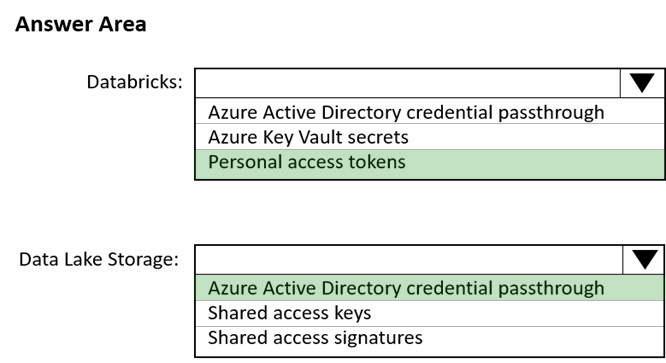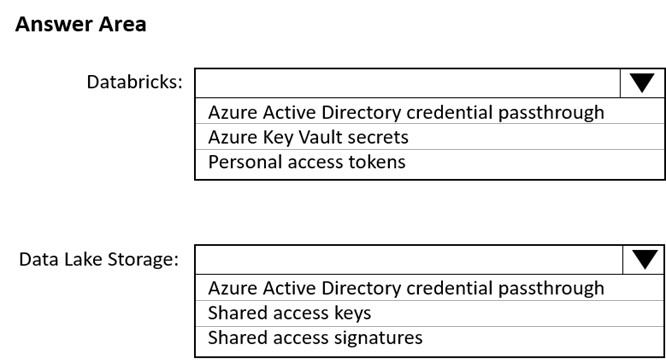
Box 1: Personal access tokens -
You can use storage shared access signatures (SAS) to access an Azure Data Lake Storage Gen2 storage account directly. With SAS, you can restrict access to a storage account using temporary tokens with fine-grained access control.
You can add multiple storage accounts and configure respective SAS token providers in the same Spark session.
Box 2: Azure Active Directory credential passthrough
You can authenticate automatically to Azure Data Lake Storage Gen1 (ADLS Gen1) and Azure Data Lake Storage Gen2 (ADLS Gen2) from Azure Databricks clusters using the same Azure Active Directory (Azure AD) identity that you use to log into Azure Databricks. When you enable your cluster for Azure Data Lake
Storage credential passthrough, commands that you run on that cluster can read and write data in Azure Data Lake Storage without requiring you to configure service principal credentials for access to storage.
After configuring Azure Data Lake Storage credential passthrough and creating storage containers, you can access data directly in Azure Data Lake Storage
Gen1 using an adl:// path and Azure Data Lake Storage Gen2 using an abfss:// path:
Reference:
https://docs.microsoft.com/en-us/azure/databricks/data/data-sources/azure/adls-gen2/azure-datalake-gen2-sas-access https://docs.microsoft.com/en-us/azure/databricks/security/credential-passthrough/adls-passthrough

